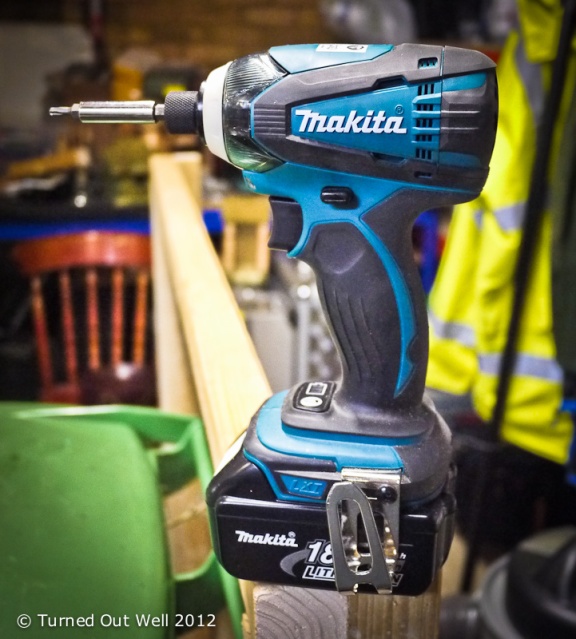Please excuse the alliteration in the title; I simply couldn’t help myself.
I made a posting a little while ago about promoting yourself by using a video on YouTube and in that post included a few suggestions as to best practice on how to promote that video. As I said in that posting, until recently I was a professional video producer/director, and I originally trained as a TV cameraman and director many years ago; so I think I know a little about using a video camera. Which brings me nicely to the subject of this post.
I realised that in the post mentioned above, I suggested in the tips how the video should be promoted, however I did not really give many tips on how to make the video itself. What it could contain and how the footage is shot in the first place all contribute to whether the video is worth watching… or not.
First a little about me… I’ve always been a rebel, quite an nonconformist; not a ‘law breaker’ you understand, more what I would describe as a ‘rule challenger’. In fact my wife say’s I’m a real ‘rebel without a cause’, which truth be told, I’m quite proud of… My earliest rebellion being playing hooky during the day, in the pre-school Macmillan nursery that I went to. At the age of four, I really didn’t want to lie on a little camp bed for a nap in the afternoon after taking my warm milk. Hells Bells! You have got to be kidding!
For me there was lots of life to live and lots of things to experience. Sleep I had decided even at that tender age, is for wimps! Why on earth would I want to spend part of the day sleeping, just because it was the ‘expected’ thing or the ‘regular’ or ‘conventional’ way of doing things? Yeah Right…Not for me!
Many a happy hour was spent sitting high up in the natural bowl of an oak tree in the grounds of the nursery, with my best pal of those years; Mike Adams, looking down on nursery staff desperately searching for us, whilst the other children were blissfully sleeping. I don’t think they ever sussed out where we got to as we only ever climbed up or down when they were not around, and the tree itself was surrounded by big stinging nettles. I suppose nowadays they would have called the police in after half an hour and we might have had a serious telling off. How I remained a serial rebel all my life, yet have avoided getting into serious trouble with the authorities, is perhaps best kept to myself. However consider, the very best criminals are the ones you never ever hear about; because they’ve never been caught.
Anyway I digress… The point I was making when I went off on that considerable tangent, is that I’m not someone that always believes in sticking hard and fast to recognised rules; especially if I don’t trust them. The ‘rules’ as we know them can often created for the wrong reasons and if they were never challenged we would be living in a very different world. Perhaps the ‘bed rule’ in my nursery years was created to give the staff a break… time to pop out for a smoke or a cup of coffee?
But whilst I believe rules should be questioned and challenged, in video production it often takes considerable skill to break a recognised rule and get away with it. There are all kinds of rules, such as ‘crossing the line’ or ‘rule of thirds’ as well as others. So lets forget rules per se, I prefer to attempt to give useful tips, hence the title of this posting.
Making improvements to your video making and the resulting videos really is not that difficult. By following just some of the tips and advice I give below, you should get better results, and therefore produce more ‘watcheable’ videos.
Here’s my tips:
1. Get rid of ‘The Wobblies’; use a tripod whenever possible.
Nothing puts people off from watching a video longer than a few seconds more than constant wobbling footage. In fact many people say they feel something similar to seasick watching them, and therefore switch off quickly. One of the best ways to reduce this effect and therefore improve the appearance of your videos, is to regularly use a tripod in order to get steady shots. If you’re unfamiliar with what a tripod is, it’s essentially a three legged stand for putting a camera on to hold it steady, usually with a tilting and rotating ‘head’ which the camera attaches to. The tripod is particularly useful for cut-away or close up shots, or if you want to leave the camera in the same position for a long time. If you want really good results, get a tripod with a head specifically designed for video cameras, however be warned these do cost considerably more than tripods sold in photographic stores on the high street.
2. Avoid using the dreaded ‘Zoom’ when recording.
A camera’s zoom control, or zoom lens, is designed simply to move your view closer-in or further-from the subject. Nothing screams ‘amateur’ in the finished video, more than constant zooming in and out, often on the same view.A professional camera operator will very rarely use zoom during the recording and a good editor will usually try to remove it. It is far better to stop the recording, then zoom in or out and start recording again. Sometimes a camera takes too long to start and stop recording, so you may need to zoom whilst filming. If you must use the zoom when recording a clip that will definitely be used in the final video, try to do it very slowly. Alternatively, zoom very quickly and remove the zoomed section of the recording when editing the video. But PLEASE don’t start recording, then zoom in, hold for a few seconds then zoom out again!! Aghhhh!!
3. Learn how and when to move.
One of the most common video mistakes made by amateurs, which often also contributes to very shaky footage, is the constant movement and ‘wild’ swinging around of the camera. As mentioned above, watching the resulting footage can make a viewer feel decidedly unwell! Obviously when shooting someone talking, as in an interview, keeping the camera on the subject for as long as required is a given. But for cut-away shots or other subjects that you want to record to ‘flesh out’ your story, once your happy with the framing and focus, record a static shot for around 10 seconds maximum (many professionals might say a maximum of 6 seconds). Then stop the recording, move to a different position and take another shot. Of course this links back to tip 1. Use a tripod for best results. When panning the camera (moving it sideways) or tilting (moving up and down), use very slow, smooth, and deliberate motion and go as slow as possible without resorting to ‘the shakes’. This will make your videos far more enjoyable to watch. If you have to walk with the camera, use both hands to hold it, and walk as steadily as possible, using your arms and elbows as built-in shock absorbers. It is often easier to do this sort of filming holding the camera at waist height. Practice makes perfect in this case.
4. Compose and consider every single shot.
The purpose of video taping something, is so you will be able to remember and enjoy it later or to assemble it into a film for some purpose. We’re more interested in the latter reason in this case. Before you hit the record button, look carefully at your shot and consider if you have everything in the frame that you want to capture. Then look carefully to see if it is framed nicely. Do this as you would if you were taking still picture; BEFORE pressing ‘record’, not after. However, remember if you can edit, then you can edit out mistakes, so if you notice it looks bad whilst recording then don’t hesitate to re-frame.
5. Learn your camera’s features and controls.
The best camera operators know every function of their camera and could probably operate it with their eyes shut or in the dark; I’ve had to do this on many occasions in my professional work. Having a good knowledge of your camera’s features and functions, and what all the controls and switched do is a necessary element of making better videos. More than just knowing where every control is, you should make time to learn what they are used for and how all the image settings such as white balance, exposure, and backlight affect the recorded image. You may have seen the abbreviation RTFM – and if you don’t know what that means I suggest looking it up. It’s very true and good advice in this situation.
6. Tell a story using pictures.
If you don’t have the time or equipment to edit your videos, you can use ‘in camera’ editing. This is really just a fancy name for recording and stopping or pausing at just the right times, in order to tell the story without removing the media from the camera; it’s very hard to get right without careful thought or planning.
Whether you edit or not, people will enjoy watching your videos far more if they tell a story they can understand. You don’t have to narrate a video to tell the story; if done skillfully, pictures alone can do that. Alternatively, if you are going to edit the clips together into a finished film, consider if you have everything your story needs. More shots are better then too few when you’re editing. Even multiple shots of the same item or activity from different viewpoint angles and different distances are very useful. Always remember to get a lot of close ups to use as ‘cut aways’. These are shots where in the film we ‘cut away’ from the main action or interview etc. to show an illustrative shot or a close up detail. So for example; A florist may be talking about the range of flowers her shop has available in the Spring and we ‘cut away’ to see a number of different shots of the flowers, some wide shots as well as some close ups, before returning to the florist.
In the editing stage you can easily drop shots if you have too many, but if you have too few it would mean going to shoot again or finding something to ‘fill the gaps’, often not possible or practical. Even the best professional editors count on having enough well shot clips from a camera operator.
- Using a video on ‘Tyre Fitting’ for example… in order to produce a credible story your shots could include;
- A driver examining his/her tyres and shaking their head (setting up a reason for the video)
- Perhaps showing a tyre gauge reading low (reinforcing the reason)
- The driver using his computer to look for a tyre fitter
- Calling the fitter on the phone
- A smile on the drivers face when he gets an appointment
- The outside of the tyre fitter’s building with the vehicle/driver arriving
- The company sign – A close-up
- The inside of the office/sales area
- A close-up shot of an order form being completed
- The racks of stored tyres (wide shots W/S and close ups C/U)
- The vehicle being driven into the tyre bay
- Wheels being removed from the vehicle by the fitter (W/S & C/U)
- Removing the old tyre from the wheel rim ( shot from a couple of different angles)
- Close up of worn/damaged tread
- Empty wheel rim on machine
- Fitter selecting correct tyres
- New tyres stacked up ready for fitting
- New valve being attached (C/U)
- Rim being cleaned/lubed (W/S & C/U)
- New tyre being fitted to wheel rim
- Customer watching (C/U on face)
- Refitting wheels to vehicle (W/S & C/U)
- Happy client face (C/U)
- Vehicle being driven away (W/S)
- Close up on moving wheel with new tyre
All the above shots could easily be edited together to produce a great little ‘Tyre Fitting Co.’ promo, with or without a voice over.
7. Improve your Audio.
Unless you don’t intend in using any sound, one of the best ways of improving your videos and making them sound as well as look professional, is to invest in an external microphone to get better audio. If you intend recording people talking, buy a tie clip microphone, which can bought from as little as £20 at places like Maplin. If interviews are not your thing, then consider another external microphone, such as a short shotgun mic. The reason for doing this is simple; a built-in microphone cannot be placed any closer to the audio source than where the camera is located and even good built-in microphones will not do a good job of picking up soft sounds at any distance. An external mic can be placed closer to the sound source you want to record and will help to reduce interference from other noise source.
8. Always consider the Lighting.
A lot of image quality problems can be solved by employing some simple lighting techniques. This does not mean you need to buy lighting equipment, because with some thought you can make the best of the natural or available light in the filming location. Whenever possible, shoot in a well-lit area. Make sure there is not bright light like the sun behind a subject or shining directly into your subject’s eyes. If your subject is standing in a badly lit place, move them into better light and the result will look far better. Standing an interview subject close to a window in an otherwise dark room during daylight hours can produce dramatic results.
9. ALWAYS make sure your lens is clean.
There is nothing worse than watching video from a camera with an obviously dirty lens; it de-values everything else you have achieved; all of the above tips would be for naught.
Before shooting always ensure your lens is clean. If you don’t have a dedicated lens cloth (they are only £2 to £5 from a high-street camera shop), breathe on the lens and use a clean dry handkerchief. Never use paper tissues from an unknown source, they might be impregnated with oils which can potentially harm a lens.
10. Pack your kit bag carefully.
Every video camera operator has their favorite goodies that they keep in their camera bag, but there are some basic things that I think every video camera owner should carry with them.
- A lens cleaning cloth that does not scratch the lens. These can be picked up cheaply at high-street camera stores (don’t forget to use it, especially after rain).
- A blower. To be used before cleaning a lens to remove any dust or grit which can be very damaging.
- At least one extra battery. Buy an extra long life battery; whilst they can be expensive, they are almost always a good investment – and make sure they are charged before heading out on a ‘shoot’.
- Blank media. A few blank videotapes or cards.
I hope these tips prove useful… I’ve wittered on far too long now. Let me know if they help.
Cheers, Steve








 The drill chuck glanced off where my forehead would have been… just like a header in soccer, with a resounding thwack that pushed me back as if I’d been kicked in the head by a horse!
The drill chuck glanced off where my forehead would have been… just like a header in soccer, with a resounding thwack that pushed me back as if I’d been kicked in the head by a horse!
